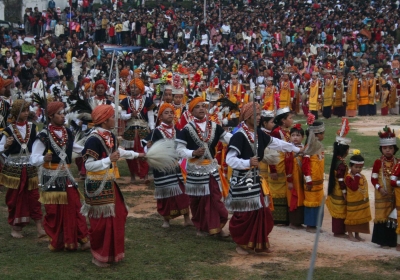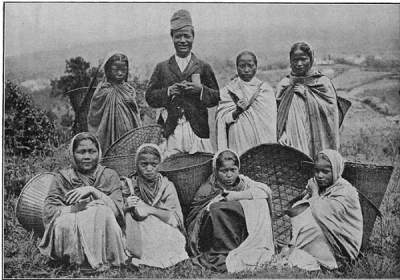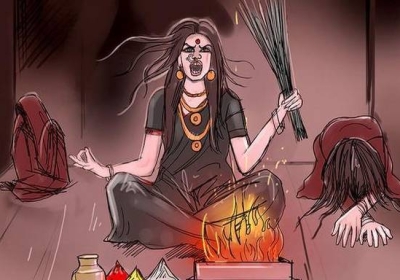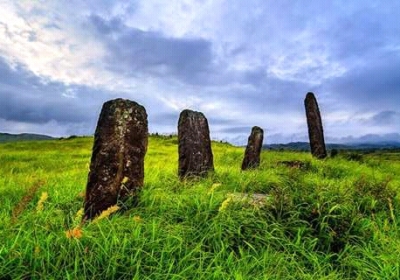KHASI MATRILINEAL CLAN LINEAGE: THE SOCIO-POLITICAL CHANGES

The predominance of the patriarchal culture throughout the world has negligible remnants of matrilineal cultures in certain parts of the world. If there is any indicator, it can be presumably concluded that the natural forces of being through the ages facilitated that human inhabited certain specific space under the custody of the mother, while other male members of the clan are the protector of the domestic sphere under the supervision of the eldest uncle. It is compulsory that every mother is constantly responsible for the care of her own offsprings and members of the clan, while the father may or may not engage himself in the task for the wellbeing of his spouse and children. Generally, all other creatures apart from humans responded to the natural sexual urge with any opposite sex within easy access, which signifies that it could happened among the flock, even if it was with their own off springs. Among all beings, perhaps human is the only creatures that have the sense of conscience towards their fellow human in the moral conduct and behaviour, even as other creatures are also capable of expressing emotions. It is the human instinct that facilitated every mother to take care with proper custody of her off springs and ensure that the domestic area is safe for each one of them, and inculcated a sense of responsibility upon the male members to assume possession of their clan and asserts protection from external forces. It is a natural process that the maternal impulse would prevent any sexual relationship within the clan, and thereafter ascribed as taboo,an unforgivable transgression. Therefore the core of the family is the mother as the custodian of the family and along with other female members of the family including her daughters are always settled in safe domestic sphere, away from the wilds due to certain natural forces of cosmic energy that might be detrimental to the female reproduction system, while the male are usually assigned with the task of collection of essential stuff from the surrounding environment or farther domain for the survival of the family. Gradually, the habit became the conventional practice in every household and a custom in the community. The growth of female human from infancy to the age of puberty is considered a pure biological development. From thereon, the female human is under the care of the cosmic energy of lunar menstruation cycle for regular cleansing of the womb until she engaged in sexual relationship with the male human. The male human has a constant physical growth until he became matured as an adult and legible for reproduction. Usually, male members would return back home after their daily task of wandering in the wilderness; and on frequent occasions they would meet the female counterpart of another clan for engaging in the mating process. This is the community social reproduction system that prevailed in the ancient past, and gradually the interrelationship among the community evolved in the form of kinship. The male members of one community would always be encouraged for mutual relationship with the female members of another clan and they were allowed to stay overnight with their mating partner. The constitution of family structure within the maternal clan has emerged into a norm of ethical regulation in human society, thus the emergence of matrilineal culture. In Khasi parlance the core of family is the hearth with three hearthstones that signify the ancesstress (ïawbei), ancestor (thawlang) and the maternal seer (suitnia), which literally means the mother, father and maternal uncle respectively. This hearth provides the warmth where myths, legends and folklore are woven in the strains of cultural narrative about the traditional values that lay the foundation of a Khasi family.
Generally, the male members are accessible to vast expanses and wider segments beyond their territories, while the female are confined in the vicinity of the surrounding environment within the territory. The situation has facilitated that men encountered diverse circumstances in their daily life and explore new vistas in the adventure around the world. Most of them would return to their flock with a sense of responsibility, while others could be fascinated with innovative search for alternative livelihood. In the process, men has the advantage for more empowerment and authority over the women, to an extent that they think the earth is the world of man. This notion has given rise to misogynism and men dominated the entire world for centuries and ignored the spiritual and emotional strength of women in family bonding. The men take control of the entire family structure and management and utilise the women as mere tool of domestic custodial guardians and for reproduction purposes. However, in Khasi society human beings are never identified with gender in the material world, unless there is certain reservation for the biological productivity of the female beings. Conversely, if the woman chooses to venture outside the domestic sphere she is free to decide her own destiny at will. There are instances in the past that women displayed their intellectual prowess and took the mantle of steering the council of nobles in the affairs of the dominion. The legends of Ka Pahsyntiew, Ka Li Dakha, Ka Syiem Latympang, Ka Ïang Langdoh and others are the testimonies to the traditional practices of social equality in every aspect of community issues. In view of various social and cultural considerations, there is a convention that female prefers to remain in the domestic domain while the male ventures out and participates in many activities relating to the society far and beyond. Therefore, the mother performs the role of the priestess in the initiation process of the family religious affairs and the uncle takes the role of the priest for all the matters outside the domestic domain.







